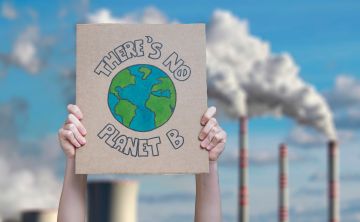Transforming waste and biomass to valuables
Based on an interview with Ange Nzihou, Distinguished Professor, Chemical and Environmental Engineering
How do you determine if waste is worth valorizing?
Every time we deal with environmental issues we need to keep in mind the economics involved. If nobody is interested in getting value, and doing business with waste materials, then valorization will never make sense despite what we hear in the media. It always comes down to needs and demand or economics. When these two pillars match, it makes sense to think about how to transform whatever feedstock into valuables that meet both economic and environmental benefits.
This brings us to key materials such as plastics, which has been one of the tremendous materials developed during this century. But the drawback is that we have been generating a huge amount of very complex plastics, that cannot be easily reused. This is because most of the latter contain some pollutants such as metals that make them not worth it for direct recycling in a circular economy, which means we have made them, we have used them, and at the end of life, we have to bring them back to the economic circuit, closing then the material cycle.
Then, there are strategic materials. Today, the situation is extremely tense regarding strategic or critical metals, such as copper and rare earth metals used for batteries or electronics. The resources in these are very critical and the geographical distribution is mostly concentrated in very few countries. These are the most important metals because we use them in many of our daily needs (i.e. electronics, batteries and cars). And today when these strategic materials come to the end of life, the recycling process recovers only a limited amount. So if you ask me within the main strategic streams, which one nowadays merits to be taken care of the most, I would say metals, rather than plastic. This is because in terms of metals currently the value chain is under control even if some progress is still needed. Plastic is the most abundant material used worldwide, so it makes sense to talk about plastic because it speaks to everyone. Everywhere you go plastic is an issue while metals are not always visible at the first instance. This is why people don’t see it as a strategic problem, while it really is one.
What are the recycling opportunities and challenges for critical metals?
I’m a chemical engineer: what drives the understanding of the process is mass and energy balance. So if I take copper for example, there is annual production despite where it comes from, and this amount of copper is scarce and is decreasing because those resources are not renewable. So in twenty to thirty years those materials won’t be available anymore if not recycled properly. So with imagination, nowadays recycling technologies have been developed to the extent that they are creating new jobs and new technologies, that’s why I see this as an opportunity rather than a problem. It is helping to redesign engineering, and to reshape the way we think about the production of new materials for tomorrow’s challenges. For young engineers, recycling and valorization bring the opportunity of progress and new technologies and concepts. This brings to the forefront innovation and sustainable development. We have to shift our mindset to develop a new approach that combines efficiency, economic benefits and environmental criteria. As teachers, we have to teach the design of the process in a different way. Instead of taking into account only the efficiency, now we have to mitigate the mass and energy balance to lower those burdens and make greener tech and approaches.
In particular what are the challenges and latest innovations when it comes to recycling plastic waste?
Plastic has been subject of a lot of sci and tech developments and it has been pushed to the extent that recycling is now an issue. Microplastics with specific functionalities for instance that are difficult to manage and spread easily in the atmosphere and in marine environments. These are very fine fractions of plastics that can be dispersed into the ground and are not removed by waste management systems in cities. In Europe, plastic recycling schemes have been developed for the last twenty years with well-defined streams and stakeholders, but today we are seeing a new type of plastics which the current system does not know how to deal with. These plastics are spread everywhere in waste water and in the atmosphere as very fine particles that we breathe making plastic a big health issue. On the one hand we have gains in terms of functionality-we can use plastic everywhere, but the drawback is the that they decompose very easily and spread everywhere and the main issue is microplastic in air and wastewater.
The innovations lie in the development of bioplastics from bioresources while nowadays most plastics are made from chemicals derived from fossil fuels. The challenge and incentive lie in replacing fossil fuels with bioresources to make biodegradable plastics; this is the future and where opportunities for innovations and breakthroughs are. This will generate new technologies and new products with lower environmental impact as well as a new economy and new jobs.
What would you say to a student who is considering a career in waste and residues management?
We need to consider waste as a feedstock, as an ore, as something from which value can be extracted. This used to be politics, nowadays it is an economic incentive and many companies are making money out of waste materials; this means students have real career opportunities in waste management which has an economic sense and a social purpose. Young people today want jobs that have meaning: and waste management could answer this need by making money and solving a global problem.
Ange Nzihou has been working at IMT Mines Albi for 22 years, he is a teacher in the Master in Biomass and Waste for Energy and Materials (BiWEM) and researcher in the RAPSODEE joint research center with the CNRS.. He went to the US in 2003 & 2004 as Visiting Professor at Princeton University. Today he still teaches at Princeton and has just received a Fulbright scholarship to return there in 2022. He also holds visiting professor positions at University college Dublin, Mahatma Ghandi Univ. (India) and Zhejiang Univ. (China). He spends almost one third of his time teaching and doing research abroad. His research focus is on how to transform waste and biomass to valuables, which means fuels or strategic materials. He is also the Editor-in-Chief of a peer review international journal called Waste and Biomass Valorization, created with Springer Nature ten years ago.


